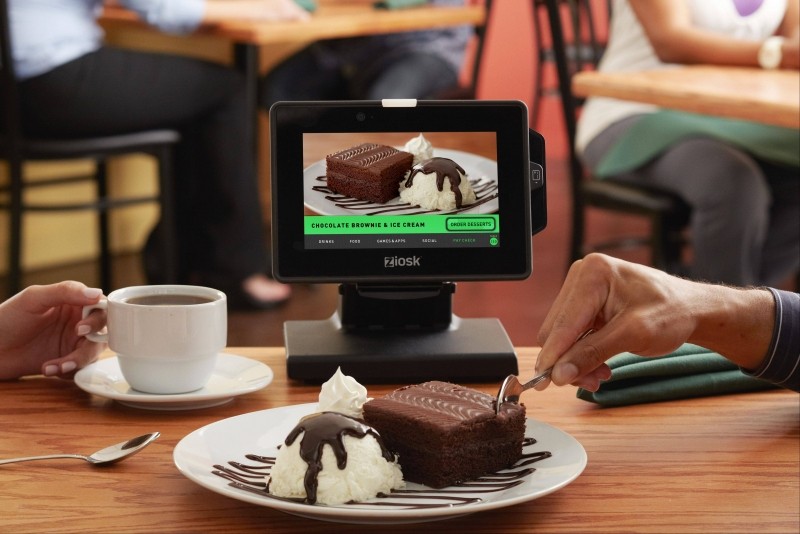More eateries are using tablets to replace some server responsibilities. They can save you time, but they might also encourage you to spend more.
A new trend is sweeping the restaurant scene: Tablets can be found at the tables in many eateries, serving as interactive menus that take on some of the workload of wait staff. You'll already find them in Chili's, and many Outbacks and Applebee's locations. Olive Garden is the latest big chain to announce a nationwide roll out.
But, can a tablet really replace a waitress? Is this just a gimmick, or does it improve your dining experience? We decided to take a look at the pros and cons of restaurant tablets.
The Pros of Restaurant Tablets
For restaurants, these tablets are sold as a way to increase the take. According to the suppliers, they cut down on the time people spend in the restaurant, they encourage people to spend more money, and they boost customer loyalty. But how do they work from a customer perspective? Here are some of the major benefits:
- Order when you're ready. You don't have to catch the eye of a passing waiter, you can just tap on the tablet to order a new dish or a refill.
- Entertainment at the table. Most of these tablets offer games, for a small fee, that are suitable for keeping children amused, or act as ice-breakers for adults.
- Pay when you're ready. You no longer have to wait for a member of staff to be free before you can ask for the bill, pay it, and leave.
These are the key attractions for diners, but there are other potential benefits that can be good for the business and the customer. It's possible to include more detailed descriptions of dishes and photographs. There shouldn't be any errors in the order, at least none that can be attributed to the servers. Restaurants can appeal for instant feedback, which should help them improve. People are much more likely to complete a survey or answer questions while they are still there, than go online using a receipt link when they get home.
On the other hand, some benefits for the restaurant may actually turn into costs for the diner's waistline. Chili's reported a 20% bump in dessert sales during testing, because it can play adverts for irresistible sweets while diners are on the main course.
It's important to note that not every tablet system offers the same range of options, and there are certain limitations. For example, you can only pay if the tablet has a card reader, and that means you'll still need wait staff if you want to pay cash. Different chains also have different rules; at Applebee's the server has to take your first drink order, and after that you can re-order from the tablet.
The Cons of Restaurant Tablets
These systems are obviously pretty expensive for restaurants to roll out, and there's a maintenance cost. You could argue that the fact they're encouraging people to spend more and eat more isn't good for diners, though it's obviously great for restaurants. There are a few other major downsides:
- There's a learning curve. While people get used to tablets at restaurant tables, staff have to explain to diners how they work, when they could be taking orders. The initial result can be a slowdown in service.
- Losing the human touch. You may feel that a little chat with the waiting staff is part of the dining experience. Tablets don't replace servers, but they definitely cut down on human interaction.
- You can't ask questions. What if you'd like to ask about the specific ingredients of a dish, you'd like another napkin, or you want to query the bill? You're going to need a server.
According to one of the biggest providers, Ziosk, tablets also increase tipping. But this may be because the restaurant can set the default suggestion, rather than because of any perceived improvement for customers. For example, Chili's defaults to a 20% tip, and you have to alter that before swiping your card if you feel it's too high.
There are other potential problems. What happens if your tablet isn't working properly? What if you tap to order the wrong dish or your kids do? What if you want some time away from technology? Tablets can also act as advertising windows at your table, and that could definitely detract from the experience. Much depends on exactly how these systems are configured, and, at the moment, most restaurants are still working that out.
Tablets aren't going to be a good fit for all restaurants, but it looks like big chains are seeing a clear benefit. The danger is that they focus on their own bottom line to the detriment of the dining experience. If restaurants try to replace staff with tablets, then it's easy to see how the standard of service is likely to decline. However, as an enhancement, the optional convenience of ordering or paying without having to call busy wait staff over could be a really good thing all round.
What do you think? Have you used a tablet in a restaurant? Did you enjoy the experience or not?
Simon Hill is a contributing writer at dealnews. Republished with permission.

